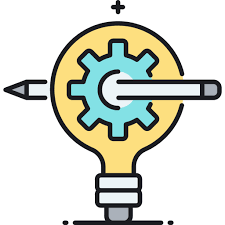Today, statistics have become an integral part of all types of research and policy-making. One can find statistics in the fields of business, commerce, health care, engineering, economics, education, law, and government. It is also used extensively in non-profit organizations to understand their organizational growth and performance, in collecting funds for such purposes, and in developing programs to benefit society. For a successful use of statistics in any given field, knowledge of statistics is imperative. There are many institutions, both online and offline that can help students develop and maintain a strong statistical knowledge.
Statistics can either be qualitative or quantitative. Those in the quantitative side study the numerical characteristics of an object, event, product, or set of people or things while those in the qualitative side study the subjective qualities of individuals, situations, decisions, and preferences. The students learn how to analyze statistical data in order to reach a general conclusion about an object, situation, or people. The use of statistical techniques and tools is important for the students to understand and interpret the results they have obtained.
The students learn how to make inferences and draw causal relationships from statistical data. A major part of this course includes practicing various statistical analyses using both the R and Sigma methods. Another important requirement is learning how to conduct a survey. Students must also master conceptualizing problems, designing a sample survey, analyzing the results, discussing the results, writing a paper and submissions, and communicating with other statisticians.
The second basic course in statistics is called descriptive statistics. Students learn how to collect and evaluate descriptive data about the variables of interest. The data set can be both real or imagined. It can include date, time, and quantity or level of participation. The topics covered in this class usually include general descriptive statistics, probability-based statistics, descriptive analysis using ordinal categories, and multivariate statistics.
Data mining is another important part of statistics teaching. This involves studying how to extract useful information from large databases. Students learn how to conduct data mining using various algorithms. Machine learning is another popular term used to describe methods of statistical inference from large databases. Other subjects covered in degree programs in statistics include health care statistics, time trends analysis and forecasting, survey methods, and traditional statistics.
Students also must complete an internship before entering into graduate school. In graduate school, statistics fall under either statistics theory or applied statistics. Students may specialize in one or the other, depending on their desired career. Some examples of areas students may choose to specialize in are medical statistics, demographics, business statistics, econometrics, environmental statistics, consumer surveys, and government statistics.
Students who enter into graduate school with a bachelor’s degree will be prepared for advanced studies in statistics. There are many sub-specialties within the field. Students who major in human or social science may find employment as a statistician, labor statistician, health statisticsian, labor specialist, or research associate in health research or statistics. Students who major in mathematics may find employment as a statistician, quantitative researcher, statistical associate, project manager, quantitative researcher, statistical analyst, computer scientist, statistician, quantitative researcher, or machine reader. Students may also pursue careers as legal researchers, research scientist, health informatics professionals, business statistics specialists, government statisticians, environmental consultants, financial analysts, and non-profit organization managers.
